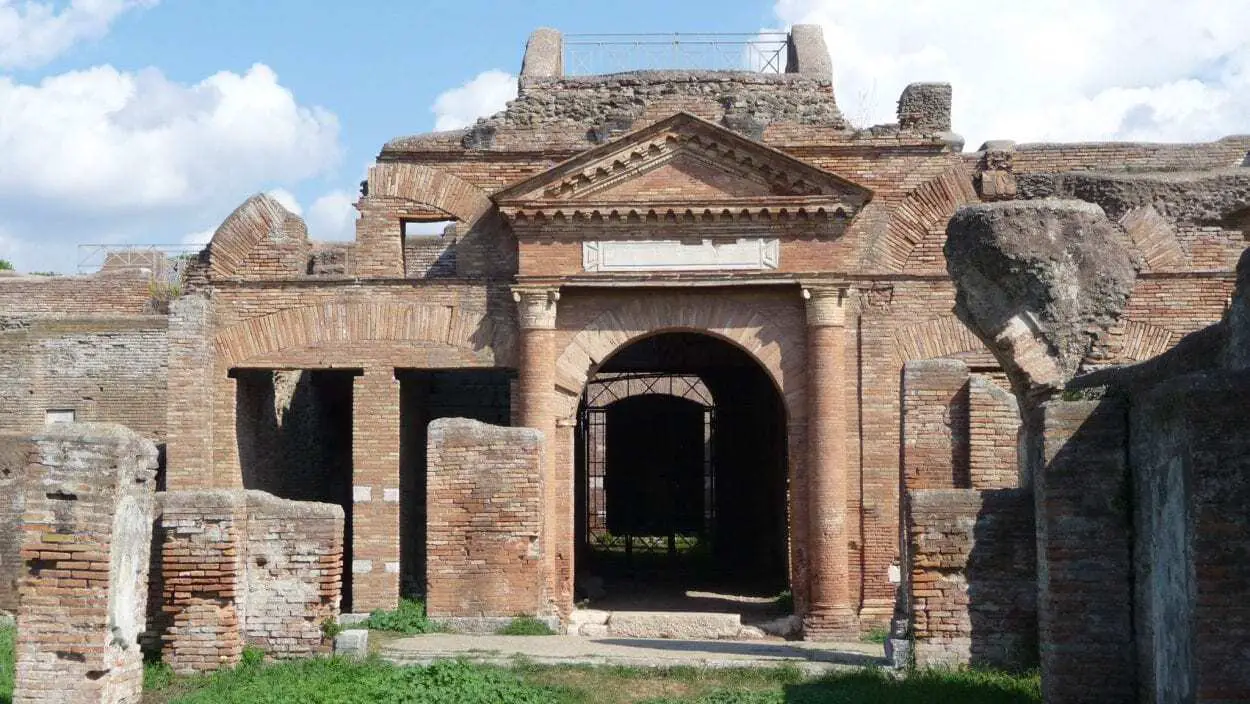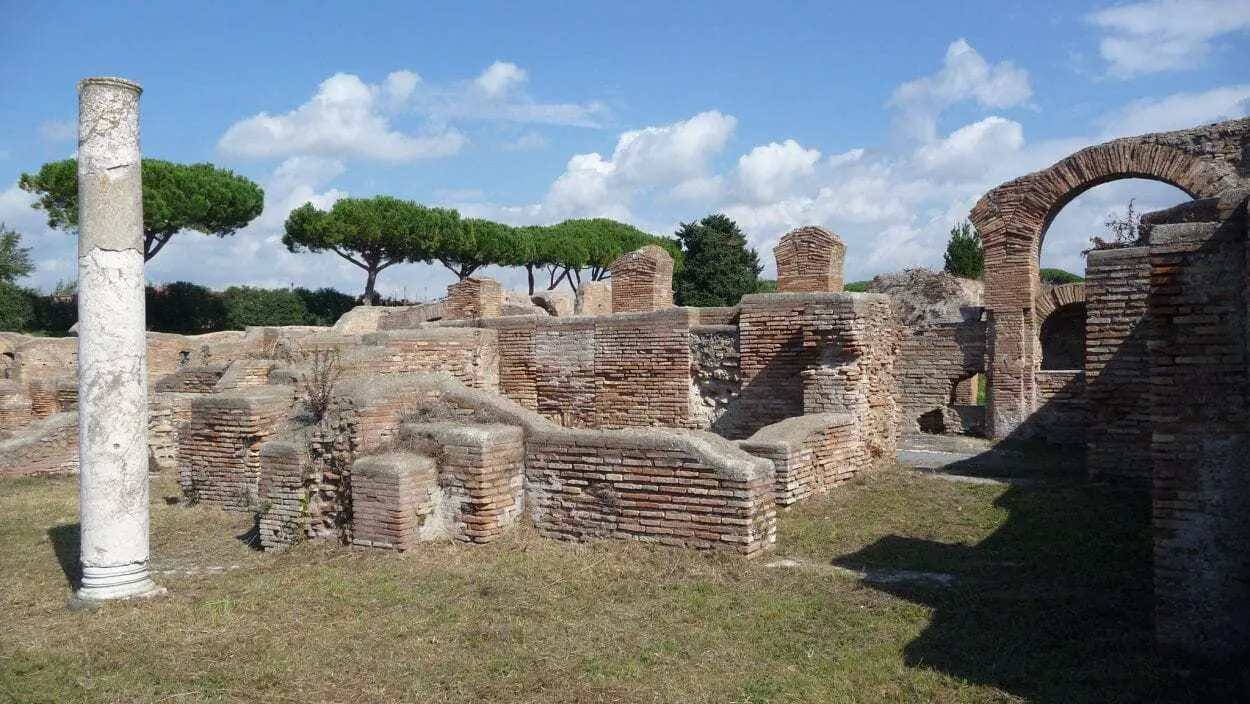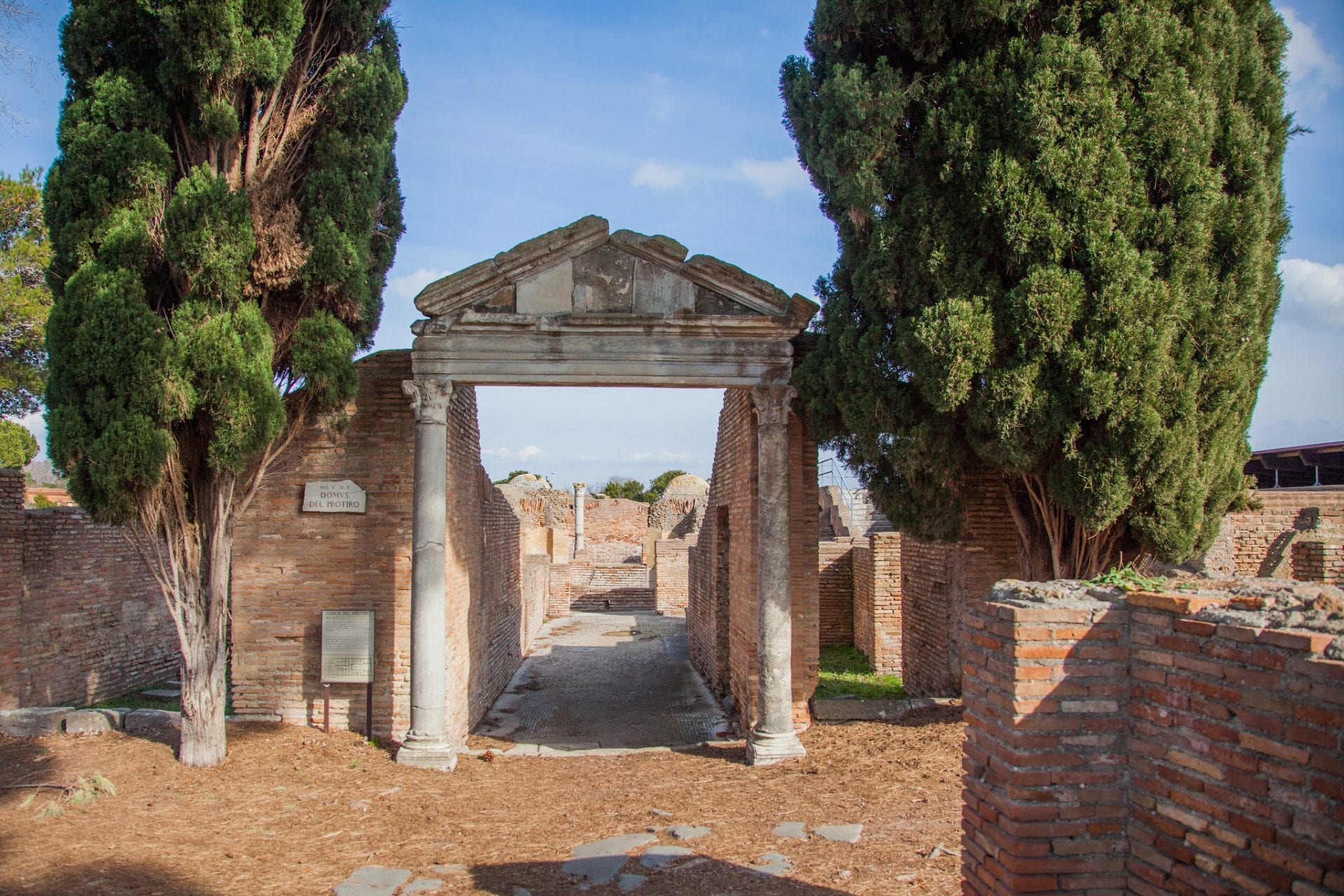Ostia Antica is an archaeological site and harbour of ancient Rome, near the modern-day Lido di Ostia in the X Municipio of the commune of Rome.
Ostia Antica was founded on the mouth of the Tiber River and was attributed by the Romans to the fourth King of Rome, Ancus Marcius, who reigned during the 7th century BC.
The earliest archaeological evidence dates from the 4th century BC, with a Roman castrum being constructed in the 3rd century BC to protect the coastline of Rome that later developed into one of Rome’s first colonia.

During the Punic wars (a series of three wars fought between Rome and Carthage from 264 BC to 146 BC), the Republican navy was stationed at Ostia and the harbour served as the main fleet base on the west coast of Italy.
The harbour town was further developed in the 1st century BC, with the construction of a forum and a new harbour called Portus, established by Claudius and enlarged by Trajan, with Ostia serving as a commercial and storage centre for Rome’s grain supplies.

Ostia grew to 50,000 inhabitants in the 2nd century, reaching a peak of some 100,000 inhabitants in the 2nd and 3rd centuries AD and contained several temples, a lighthouse, public baths, a theatre, curia, basilica, granaries and various shops and dwellings. Archaeologists excavating the site in the 1960’s also discovered the remains of the Ostia Synagogue, one of the oldest synagogues in the world.
The town’s decay can be attributed to a series of factors that effected most Roman population centres in the Western Empire. The Germanic incursions disrupting the ability to properly maintain an economy and effectively tax its populous, the mismanagement by consecutive Emperors, a reliance on mercenaries without a strong standing army and the loss of territory all contributed to a widespread deterioration of the Western Roman world.

The population of Rome contracted to 700-800,000 in AD 400 and to 200,000 or less in AD 500 leaving Ostia sparsely populated as a result. Ostia was abandoned after the erection of nearby Gregoriopolis by Pope Gregory IV in AD 827–844. The Roman ruins were quarried for building materials in the Middle Ages and for sculptors’ marble in the Renaissance.
Header Image Credit : Bradley Weber – CC BY 2.0





